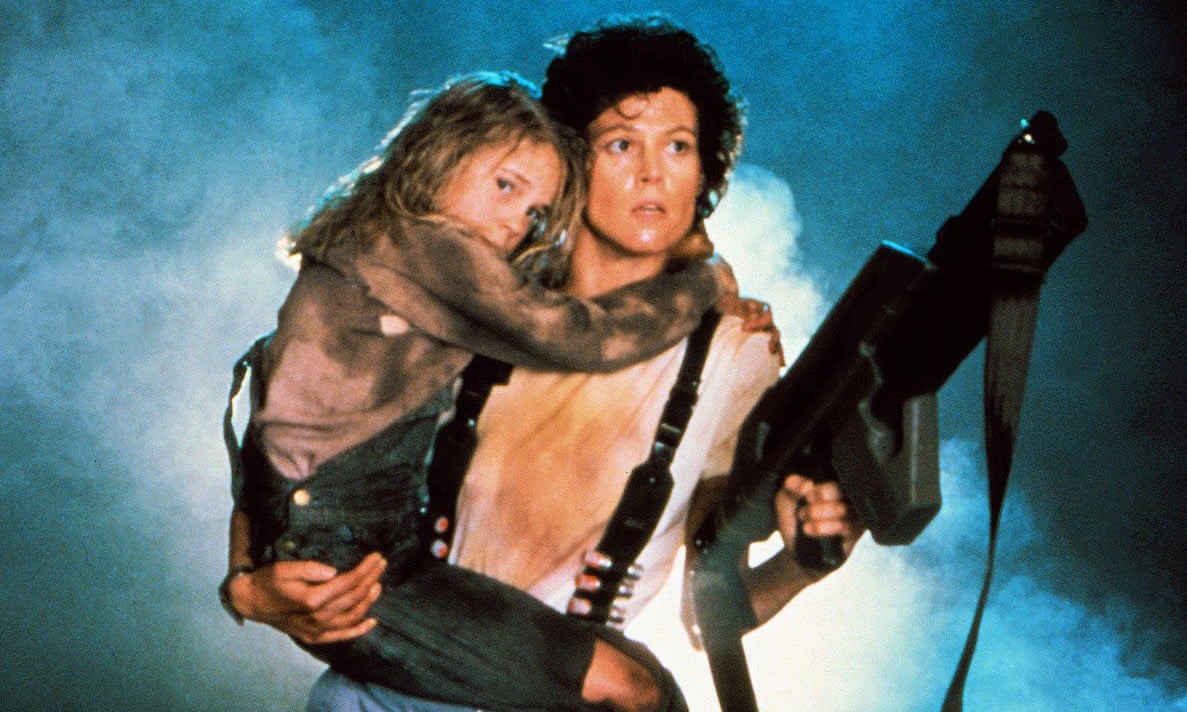
The Vietnam War was more than just a war. It became part of Western cultural consciousness in a way that other conflicts of the 20th and 21st century failed to achieve. The Korean War, the Bosnian War, Afghanistan and both wars in Iraq have their place in cinematic history: the World Wars even more so. There was something about the war in ‘Nam – its geographical challenges, defining visuals and technologies, its David and Goliath symbolism, messy politics and the legacy of its aftermath that left an indelible scar on the cinematic psyche. Audiences return to that scar routinely, tracing its paths and memories through fresh explorations in script and re-imaginings through the camera lens. It left in its fractured wake not only some of the best setting-based war flicks ever committed to celluloid but also a host of films – distant cousins, if you will – that are Vietnam War movies in nature, even if they are not set in-country.
1. Southern Comfort (1981, Walter Hill)
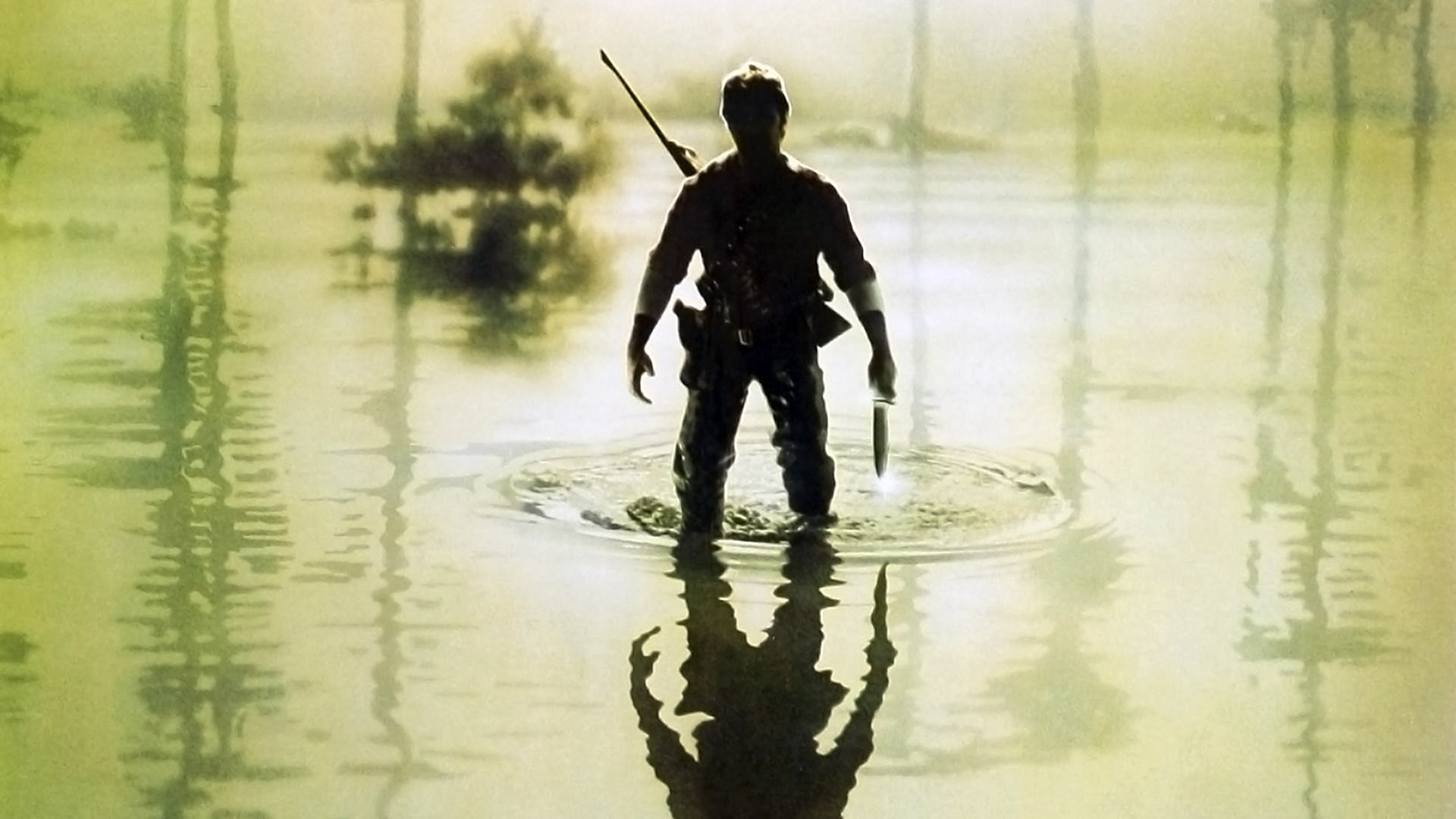
Walter Hill is a fascinating filmmaker with a sharp eye – as screenwriter, director and producer – for a great story. In the late 70s, Twentieth Century Fox charged him with developing interesting, commercial scripts for production. The two he settled on were Alien (1979) and Southern Comfort. Alien went on to make movie history. Southern Comfort did not. Nevertheless, Hill’s instincts were good and his faith in the project extended to shared writing duties and the director’s chair. As the story of weekend warriors training with blanks in the Louisiana swamps who antagonise and become prey for a group of murderous Cajuns, it has elevator pitch written all over it. Unfortunately for Hill and to his bemusement, the film made little impact or money, despite benefitting from an interesting premise, tense setting and two engaging leads in Powers Boothe and Keith Carradine. The three of them would be reunited during their involvement in David Milch’s excellent Deadwood series. On set, Hill was aware that the film would draw parallels with Vietnam but told his cast that he didn’t “want to hear another word about it”.
Despite this assertion, Southern Comfort is undoubtedly a Vietnam War movie. Penned just after the withdrawal of American troops, the hardships of the bayou setting (for both characters and film crew) and the military shorthand of the scenario are unmistakable analogies – intentional or otherwise. The soldiers in the film – like those in Vietnam, at least in the popular mind – demonstrate a Yankee brashness that evaporates when confronting their environment and enemy. Their suspicion, fear and hostility extend not only to the people they find in their respective forest settings but also to their mission and command structure. The nihilistic tone and disorientation that audiences have come to associate with the experience of the American soldier – lost equally in the jungle and upon their return – saturates the film like the swamp water through which its characters trudge.
The film does well to avoid faceless soldier syndrome. Peter Coyote adds value in a smaller role as a world-weary staff sergeant and Fred Ward is a good fit for the squad’s resident asshole. The film really belongs to Carradine and Booth, however, who have an easy onscreen chemistry that makes their evolving trust and reliance upon one another as the Cajuns claim guardsman after guardsman completely believable. Watch out for a pre-Bladerunner Brion James as a trapper who becomes a hostage to the squad. Ry Cooder provides an atmospheric score but the song “Parlez Nous à Boire” (played by Cajun musicians, the Balfa Brothers) is simultaneously jaunty and eerie as our out-of-options heroes are hunted through the revellers at a bayou village pig roast. In the end, the film – like the war it indirectly depicts – suggests that victory lies not in winning battles but in surviving the whole horrifying experience.
2. Aguirre, the Wrath of God (1972, Werner Herzog)
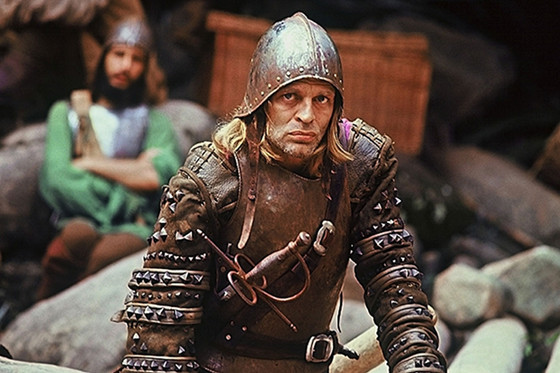
As with Southern Comfort, parallels between Aguirre, the Wrath of God and the Vietnam War are rewarding. The film depicts a doomed Amazon expedition by Spanish conquistadors in search of El Dorado. There is distrust over the expedition’s leadership, grubby opportunism, the failure of military technology and a combination of fear and confusion felt over the expedition’s direction and purpose. The indigenous population, hostile to the imperialistic interlopers, offer surprisingly effective resistance. As the film’s final shot proves, Aguirre and his Spaniards, just like the Americans, are defeated by the terrain. The conquistadors’ horses and cannons are useless in the jungle expanse, mirroring the US military’s inability to field armoured divisions and effective air support in Vietnam against an enemy utilising the advantage of their environment.
Herzog keeps his focus narrow and depictions minimalistic. This helps the film hammer its message home. Klaus Kinski is perfectly cast as the madman Aguirre, whose obsession takes his men (and his daughter) deeper into disaster. The actor’s disagreements with Herzog (some at gunpoint if rumours are to be believed) and his abuse directed at the crew bleeds into the celluloid and makes for an authentic experience. The film and the Vietnam War ultimately came full circle, with Francis Ford Coppola crediting Aguirre, The Wrath of God as a key influence on Apocalypse Now.
3. Star Wars (1977, George Lucas)
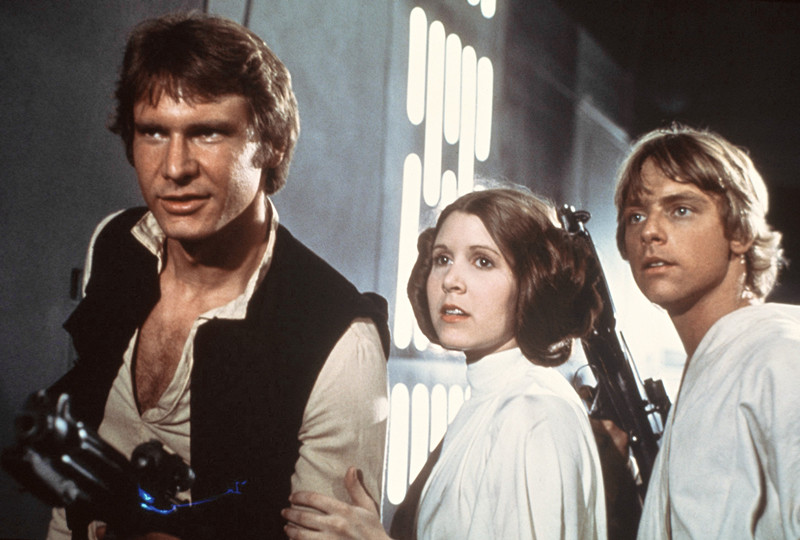
Before Coppola took the reins on Apocalypse Now, George Lucas was in line to direct. Lucas was interested in shooting a documentary-style protest film in Vietnam, but it was not meant to be. Lucas had already explored his feelings about the conflict with Star Wars and later admitted that the space opera was “really about the Vietnam War”. Unlike the previous entries on this list, Star Wars was interested in a narrative exploration of the oppressed rather than studying the crisis of the oppressor. In the film a technologically superior superpower suffers an initially inconceivable and embarrassing defeat at the hands of a plucky band of freedom fighters. This sounded familiar to young audiences only two years after America’s withdrawal from Southeast Asia.
This resonance might go some way to account for the film’s surprise popularity at the time. The youth of the 1970s had largely shouldered the burden of opposition to the war. They recognised an analogy when they saw it, despite it being buried in fairy tale aesthetics and a science fiction setting. This might also explain the perceived recent failure of directors Rian Johnson and JJ Abrams to realise the potential of the Star Wars brand. Without an audience culturally conversant in the original and meaningful context of the setting (without a time machine, how can they be?), a misguided Abrams and Johnson are all at sea and fail in their different ways to land their entries.
21st Century audiences can’t agree on what they want from Lucas’ milieu and perhaps both Johnson and Abrams are foolish to believe that they are up to the task of delivering on such broad expectations. As a consequence, all involved (audience, directors and Disney) have been variously burned by the experience. Without the Vietnam War context of the initial few films and its principles guiding future entries, Star Wars is a setting out of time, place and context. Global audiences don’t know what to do with the cash grab, copycat nostalgia of its current state. As world events continue to evolve, perhaps Star Wars might again be able to feel its way to a new relevance.
4. Jaws (1975, Steven Spielberg)
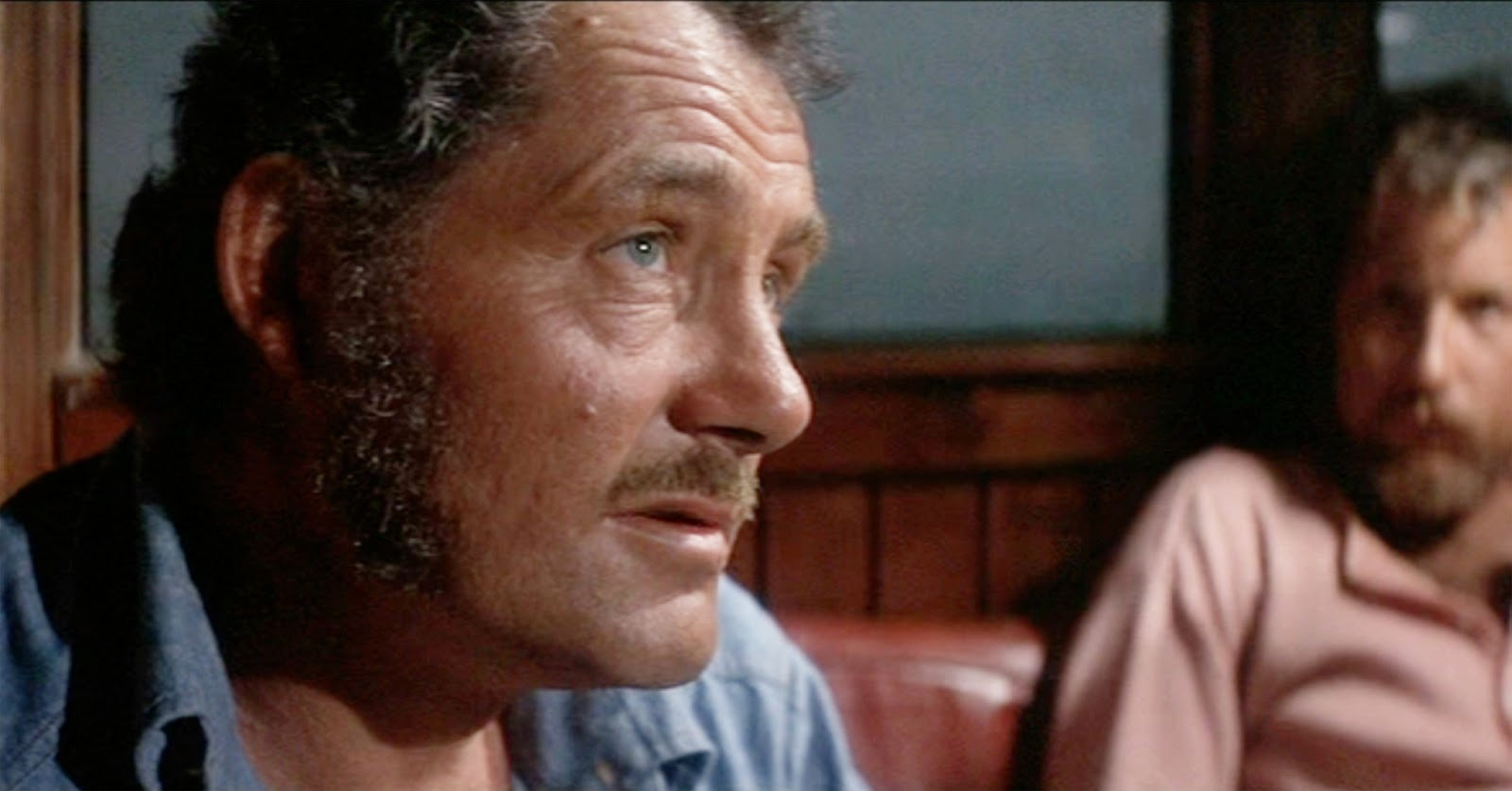
Jaws might not initially be an obvious candidate to qualify as a Vietnam War movie. The story of a great white shark terrorising the shores of a fictional seaside resort town, Jaws would seem to have little to do with American foreign policy. What, with a couple of years of reflection and distance, audiences recognised as analogy in Star Wars they instinctively sensed in what they were seeing on their movie screens in 1975. Mere months after America’s withdrawal from Vietnam, young audiences were experiencing through Spielberg what can only have been relief tinged with fear: fear relived over what had been and imaginings indulged over what might have been.
These complex feelings found expression in the ‘Jawsmania’ that surrounded the film and its success. It is a summer movie (before there was such a thing) set itself during summer- a time young people associate with relaxation, recreation and freedom from the responsibilities that ordinarily complicate their lives. A safe and happy place from which to face fears that ten years of doomed conflict had brought to the fore in the sinking dread of young hearts. These fears needed exorcising, both emotionally and culturally, and films like Jaws (and indeed William Friedkin’s The Exorcist) helped to do that.
Vietnam’s presence in the film is very much felt by its absence. Spielberg, sensing that feelings about the war were too raw to confront directly, avoided references to the conflict present in Peter Benchley’s source material. Instead, a World War II monologue found its way into the script, signposting America’s involvement in what it regarded as a just war, as opposed to the mess Vietnam had become. Finally, the war is experienced figuratively – masquerading as a thalassophobic metaphor. Like the Vietnam War, the shark is a far-off danger, just waiting to snatch teenagers from their distraught parents’ arms and drag them off to unimaginable horror and death.
5. First Blood (1982, Ted Kotcheff)
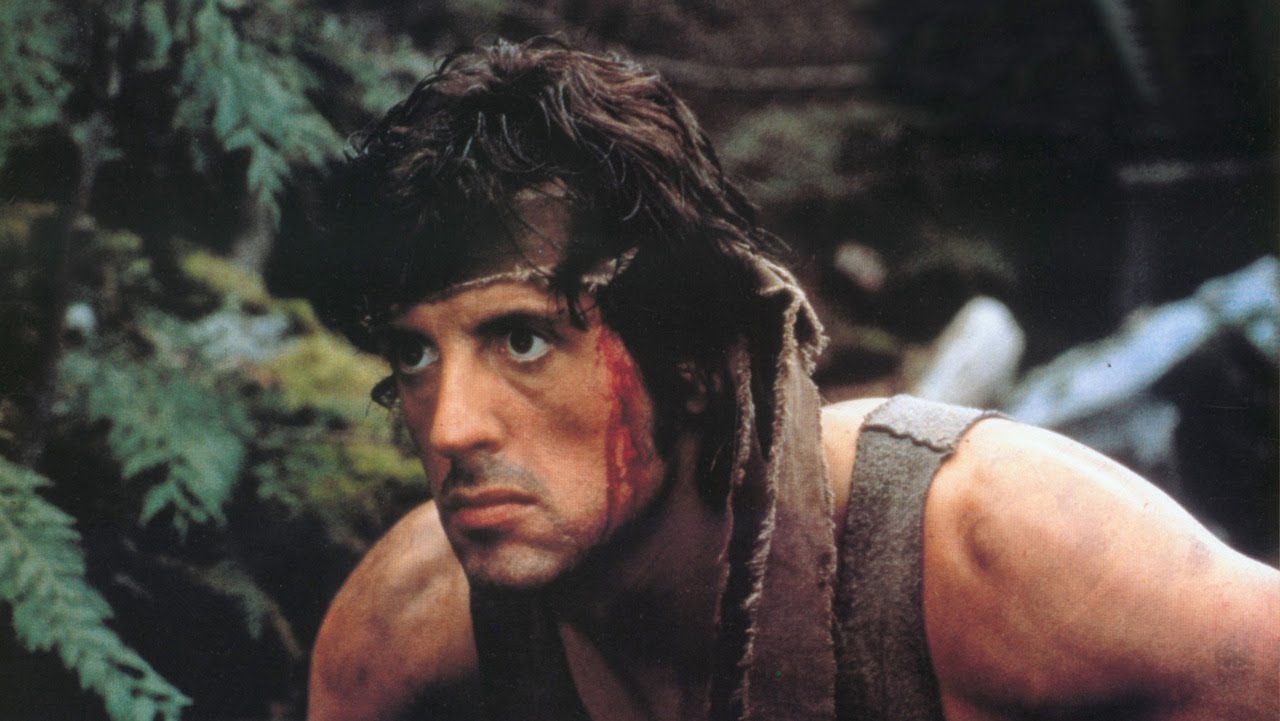
First Blood comes the closest to being an actual Vietnam War movie on this list by virtue of having a ‘Nam vet assume the central role. Based on David Morrell’s novel of the same name, it was an interesting choice for Stallone, investing the movie with a post-Rocky momentum that gave him a good deal of creative control. At times, however, the actor lost confidence in the project and at one point considered buying the film just to destroy it. He would have been wrong to do so. Not only did the movie give birth to one of Stallone’s most enduring pop culture icons, it also helped America fully confront its treatment of its returned soldiers, the realities of PTSD and violence – both cinematic and political.
Directly exchanging the jungles of Southeast Asia for the bleak woodland of the Pacific Northwest, John Rambo brings the war still raging in his soul to the small town of Hope. Rejected by the locals and brutalised by the local sheriff’s department, the wandering Rambo finds himself in a mountain standoff with growing numbers of police officers and National Guardsmen before returning to the police station to take his revenge on the sheriff. The performances all round are excellent, if unappreciated at the time. Stallone reaches beyond a physicality that already speaks to the camera to find an emotional rawness and vulnerability. Brian Dennehy and David Caruso achieve a tender complexity in otherwise unsympathetic roles and Richard Crenna hits all the right beats as the moral heart of the film. Even if the other entries in the series aren’t to taste, First Blood has more interesting things to say – about the Vietnam War, war in general and the people that fight them – than might initially be expected.